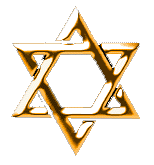


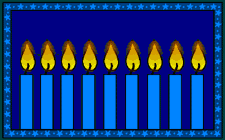



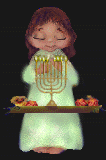








Hanukkah is a Jewish holiday which begins at sundown on the 25th day of Kislev on the Jewish calendar. The Jewish religion follows the lunar calendar and that's why on our regular calendar, it falls on a different day each year. This year, it begins on Friday, December 15, 2006(at sundown, of course!).
Hanukkah is a Hebrew word which means "rededication". Hanukkah was born out of a specific, historically recorded Greek-Jewish conflict, which is part of recorded Jewish history, Greek history, and even the Christian Bible. It is considered the first struggle for religious freedom in Jewish history.
The story goes like this:
Israel had agreed to be ruled by Alexander the Great rather than be brutally conquered. The Greeks didn't care if the Jews had their own religion and practiced it in their own temples as long as they could collect taxes and tribute. However, in 168 BCE, something changed. Alexander the Great died and a man named Antiocous became king. He wanted to control everything - tell the Jews what to eat, how to prray, whom or what to pray to, etc. The Jewish people didn't like this and a small group of rebels, lead by Judah Maccabbee and his sons, who came to be known as the Maccabees. spread throughout the countryside, taking control of villages and towns. (In Hebrew, Maccabbee means "hammer".)
The rebellion grew and the Maccabees, although they were very few in number compared to the Greeks, defeated the Greeks. Unfortunately, their holy temple had been destroyed during the battles. When the Jews had first erected their temple, they dedicated it to G-d and lit a lamp which was to burn continuously.
Well, when they went back to clean up and restore their temple, they found that all the bottles of holy oil had been destroyed except for one, which was only enough to last for one day. Miraculously, the one bottle of oil burned for eight days, which is how long it took to make more oil. (They had to ground up olives, etc., in order to make the oil for their holy lamp.) The Jews rededicated their temple to G-d and because of the miracle of the burning oil, decided that every year on that date, they would celebrate Hanukkah (rededication). Hanukkah is also called the Festival of Lights or the Feast of Lights. (Oh, the reason we write G-d instead of writing it with the "o" in it, is because it is out of respect. If by some chance the paper or whatever the word G-d is written on is destroyed or thrown away, it will not have the full name of G-d on it, too.)
We celebrate
Hanukkah by lighting the Hanukkah menorah, which has nine candles - eight
for each one of the eight days that the oil burned and one other candle
- a helper candle - which is called thhe shamash. It is used to light
the other candles. We burn one candle the first night, two on the
second night, and so on. (The shamash is always burned, too, since
that is the candle used to light the other candles. So it is one
on the first night plus the shamash, two on the second night plus the shamash,
etc.) The shamash is usually the one candle that is higher than the
other candles.
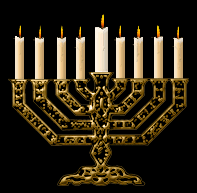
Hanukkah
Blessings
The
First Blessing
Blessed
are you, Lord our G-d, King of the Universe,
Who
sanctified us by his commandments,
and
has commanded us to kindle the lights of Hanukkah.
Baruch
ata Adonai, Elohenu melech ha-olam
Asher
kideshanu be-mitzvosav, ve-tzivanu
le-hadlikner
shel Hanukkah.
![]()
![]()
![]()
![]()
![]()
The Second Blessing
Blessed
are you, oh Lord our G-d, King of the Universe,
Who
wrought miracles for our fathers in days of old,
at
this season.
Baruch
ata Adonai, Elohenu melech ha-olam she-asa
nisim
la-avosenu ba-yamim ha-hem ba-zeman ha-zeh.
![]()
![]()
![]()
The
Third Blessing
(This
is said on the first night only.)
Blessed
are you, Lord our G-d, King of the Universe,
Who
has kept us alive, and has preserved us,
and
enabled us to reach this season.
Baruch
ata Adonai,
Elohenu
melech ha-olam she-hecheyanu,
ve-kiyemanu,
ve-higiyanu la-zeman ha-zeh.
![]()
![]()
![]()
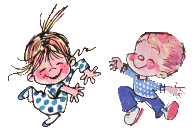
Yippee!
It's Hanukkah!
We make potato latkes (potato pancakes) which are fried in oil, which is symbolic of the holy oil.
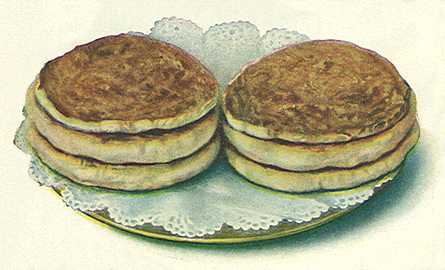
Children play a game with a wooden top called a dreidel. It has four sides and each side has a Hebrew letter on it - Nun, Gimel, Hay and Shin. These letters stand for the phrase "Nes Gadal Hyah Sham" - "A great miracle happened there."
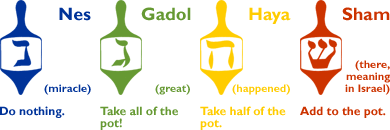 |
The dreidel is part of the Hanukkah celebration because back when the Jews were not allowed to practice their religion, they did so anyway, pretending to be gambling when the guards came in to check on them. There are two types of driedels made. One that says "A great miracle happened there" and one that is made in Israel for the people there that says "A great miracle happened here." (Nes Gadol Hayah Po)

It
is customary to give one gift each night for each of the eight nights.
(A lot of times, we give more than one, though, in our family.) We
sing songs, say prayers and have fun with family and friends.
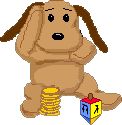

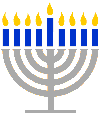


The Woof-muffins love Hanukkah, too! They love getting gifts and opening them. They also seem to love when our family comes over for our Hanukkah dinner and celebration. They get lots of attention!
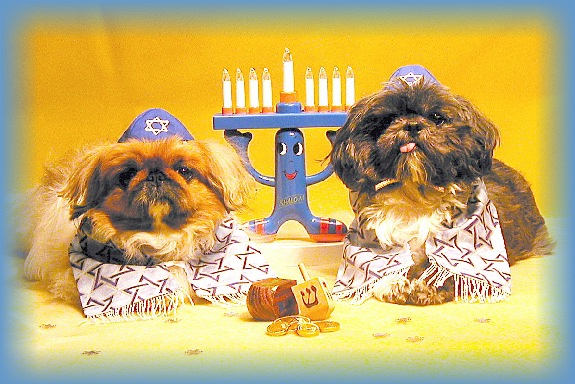
Here
they are wearing their yarmulka (skull cap)
and
tallis (prayer shawl) sitting beside their
Hanukkah
menorah (candleabra), dreidels (tops) and gelt (money).
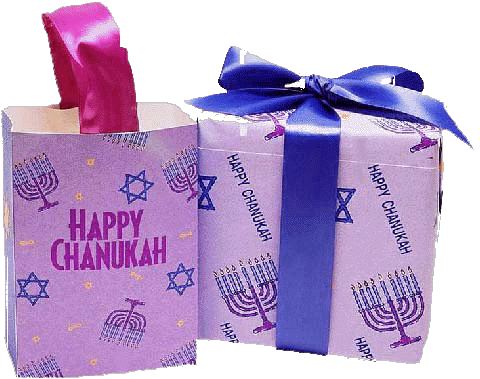
We hope
you had fun visiting with us and learning about Hanukkah. Whatever
holiday you are celebrating, we hope it's a wonderful one for you.
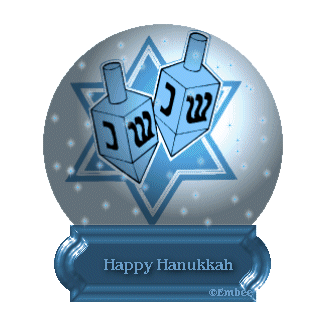
Hey!
Ever notice how a snowflake looks like a Jewish Star of David?
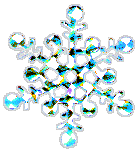
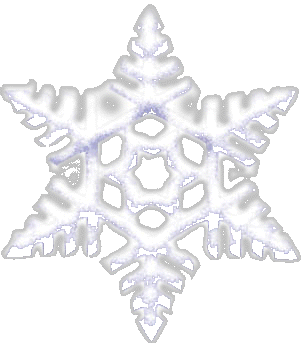

They
both have six sides.
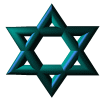
I adopted
a Hanukkah Faerie. Isn't she cute?
Hanukkah
is full of magic!

Hey!
Would you like to light your own Hanukkah menorah right here online?
If so, go to Hanukkah Lights.
If you'd like to build your own Hanukkah room with fun stuff, then
go to The Hanukkah House by clicking here.
You can
check out the Jewish webring by going here.


Home
Back

Next


Email Guestbook
Lighting
the Menorah Girl, Child with Gift and Child with Cookies graphics ©
Kitty
Roach
(Special
thanks to Kitty Roach for making the Lighting the Menorah Girl graphic
for
me upon my request.)
You are
listening to:
![]()
The
Hanukkah Song
"Joanne's
Woof-muffins" copyright © 1998 - 2006 by Joanne M. Porter
TianshingI@aol.com
Premiered
March 1998
All the
graphics seen on this page are being used with permission.
![]()